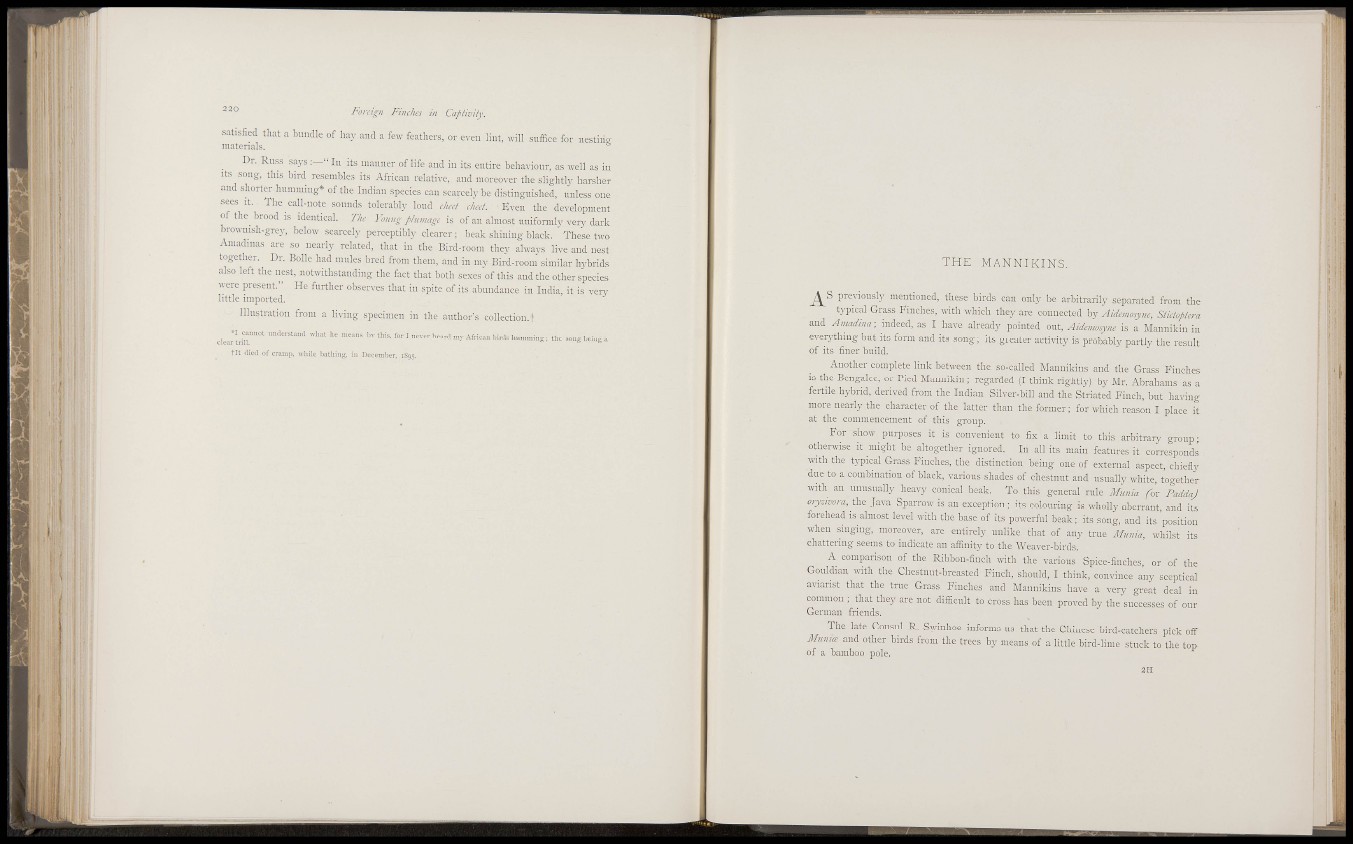
t' 'i;
>-|| J
220 Fo/n'u-// Findics in Captiviiy.
:i ?
: I;
• t;
satisfied that a bundle of hay and a few feathers, or even lint, will suffice for nestinoniaterials.
Dr. Russ sa_vs " In its manner of life and in its entire behaviour, as well as in
Its song, this bird resembles its African relative, and moreover the slightly harsher
and shorter humming* of the Indian species can scarcelv be distinguished, unless one
sees :t. The call-note sounds tolerablj- loud chccf chcct. • E^-en the development
of the brood IS identical. The Youug phuuagc is of an almost uniform] v very dark
bro^vnish-grey, below searcelj- perceptiblj- clearer ; beak shining black. These two
Amadinas are so nearly related, that in the Bird-room thev alwavs live and nest
together. Dr. Bolle had nudes bred from them, and in mv Bird-room'^ similar hybrids
also left the nest, notwithstanding the fact that both sexes of this and the other species
were present." He further observes that in spite of its abundance in India, it is very
little imported.
Illustration from a living specimeu in the authors collection.!
clear I "-^vcr hearf i„r African birds lunuming; tl.c song being a
tit died of cramp, while bathing, in December, 1S95.
I
•f
i .1 i;
THE MANNIKINS.
^ S previousl3- mentioned, these birds can onl3^ be arbitrarily separated from the
typical Grass Finches, with which they are connected by Aidcmosyne, Siictopkra
and Amadina; indeed, as I have already pointed out, Aidcmo.yne is a Mannikin in
everj'thing but its form and its song; its greater activity is probably partly the result
of its finer build.
Anotlier complete link between the so-called Mannikins and the Grass Finches
is the Bengalee, or Pied Mannikin; regarded (I think rightly) by Mr. Abrahams as a
fertile hybrid, derived from the Indian Silver-bill and the Striated Finch, but having
more nearly the character of the latter than the former; for which reason I place it
at the commencement of this group.
For show purposes it is convenient to fix a limit to this arbitrary group;
otherwise it might be altogether ignored. In all its main features it correspond.s
with the t3-pical Grass Finches, the distinction being one of external aspect, chiefly
due to a combination of black, various shades of chestnut and usually white, together
with an unusually heavy conical beak. To this general rule Munia for PaddaJ
oryzivora, the Java Sparrow is an exception; its colouring is wholly aberrant, and its
forehead is almost level with the base of its powerful beak; its song, and its position
when singing, moreover, are entirely unlike that of any true Mania, whilst its
chattering seems to indicate an affinity to the Weaver-birds.
A comparison of the Ribbon-finch with the various Spice-finches, or of the
Gouldian with the Chestnut-breasted Finch, should, I think, convince any sceptical
avianst that the true Grass Finches and Mannikins have a very great deal in
common ; that they are not difficult to cross has been proved by the successes of our
German friends.
The late Consul R. Swinhoe informs us that the Chinese bird-catchers pick off
Mumce and other birds from the trees by means of a little bird-lime stuck to the top
of a bamboo pole.